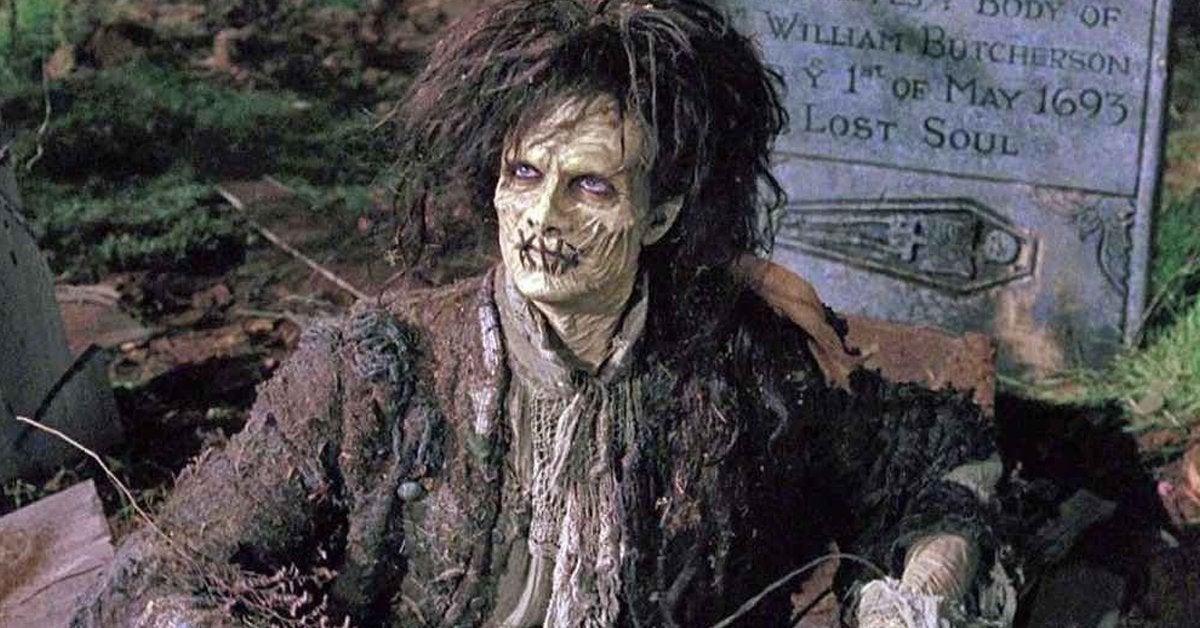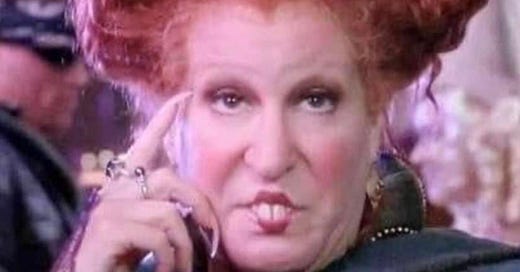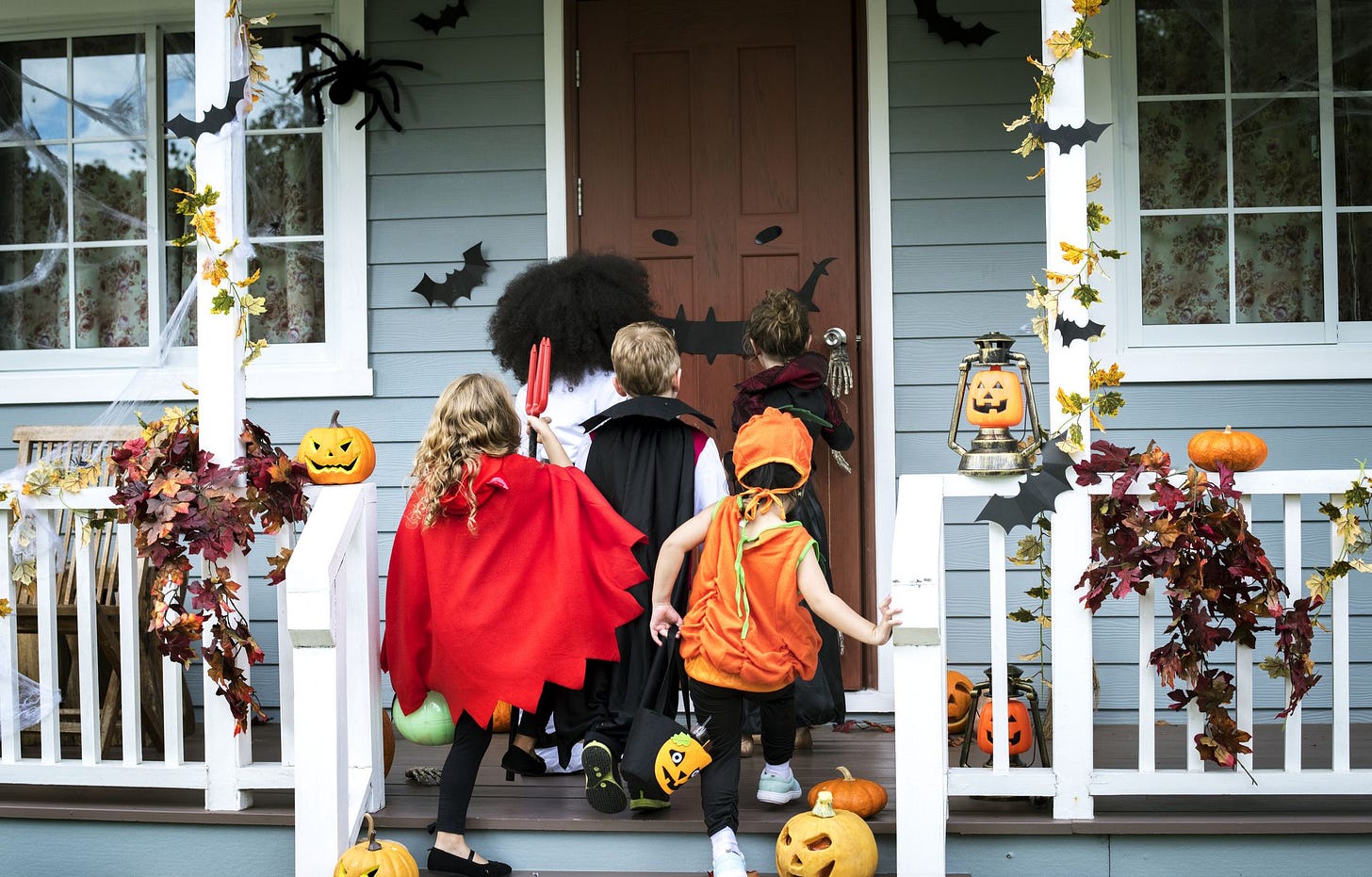I have a confession to make: For a long time, I never liked Halloween, except for the candy.
Part of this stems from my relationship with horror - a genre with which I simply have never made friends and which intersects heavily with tomorrow’s festival of fear. I was always squeamish around blood as a kid, and especially couldn’t watch gore or prolonged blood on camera. My John Carpenter-loving best friend in middle school tried to cure me of this through exposure therapy, but it never worked. I even fainted once in a college research seminar on pop music after watching Madonna get the stigmata in the music video for “Like a Prayer.”
As I got older, I found sociological and religious reasons which seemed to conveniently support my Halloween and horror aversion. Our culture’s growing obsession with horror over the last two decades has come from our growingly dystopian outlook as we lament over acts of violence, global affairs, and our own souls. As David P. Goldman wrote in his analysis of the rise of horror in America: “The pagan sees nature as arbitrary and cruel, and the monsters that breed in the pagan imagination personify this cruelty.” The cruelty we see in our own world thus invites our desire for a horror-filled catharsis through the safety of the silver screen.
So perhaps my horror aversion was a result of my pre-disposition to positive thinking, religious or otherwise, and not just because I get woozy when Wes Craven brings out the ketchup.
But Goldman’s writing points to another truth, which is that the pagan horror of Halloween is at odds with Judaism — not only in the latter’s optimism, but in its respect for life.
Whenever I teach Leviticus to teenagers, I often point out that the Torah’s idea of ritual impurity (tum’ah) is connected to Halloween stuff — namely blood and death. Blood is thought to contain the life force of a creature and thus belongs to God as the Creator of life. Therefore the Torah forbids the consumption of blood: “for the blood is the life; and thou mayst not eat the life with the meat.”1 Contrast this with the blood-drinking habits of many a vampire or other horror movie villains. They too share this biblical understanding that blood contains the life force of the dead, like Voldemort drinking unicorn blood to keep himself alive in Harry Potter and the Sorceror’s Stone. The Torah instead respects that such powers of life and death are not ours, but God’s alone, and therefore makes blood a sacred source of impurity to be “poured out upon the earth,” rather than consumed.
Another major source of impurity in the Torah is death. This includes both touching or being in the same room as dead bodies, and also things that make you look dead —like leprosy (tzara’at). When his sister, Miriam, is made to look snow-white with leprosy, Aaron cries out to his brother Moses: “Let her not remain like a corpse, as one who came out from her mother’s womb with half her flesh wasted (Num. 12:12).”

All of this is to say that Judaism is not pro-zombie. Despite its daily affirmations of God as the m’chayei hameitim (“reviver of the dead”), these propitiations are either for spiritual or full corporeal revivals in the messianic era — not hands plunging out of a graveyard looking for a human snack. The anti-zombie mentality of Judaism is also rooted in the body being in the image of God. So too, an executed man who is impaled on a stake must be buried the same day: “you must not let the corpse remain on the stake overnight…for an impaled body is an affront to God: you shall not defile the land that the Lord your God is giving you to possess.” Because the human being is God’s true image, parading or fetishizing its decay is seen as a sacrilegious act.
Nor do Jews pursue the Egyptian way of mummification, which attempts to preserve the once glorious exterior of the human being through embalming and preservation. Rather than the fetishizing of death, this is instead its denial (although most on-screen mummies look pretty undeniably dead). Jewish tradition instead encourages burial as soon as possible — both because of the lack of embalming, but also so that communal rituals of mourning and comfort can begin.
For all the above reasons, you’ll forgive me for believing that the pagan stakes of Halloween do not mesh with the heart of Torah. And for my early adulthood I was squarely in the nonobservant camp when it came to the festival of frights.
But then I got married and had kids.
My wife is a rabbi, and she is very observant of all of the holidays — including the American ones. Our house is decked out with cute ghosts, ghouls, pumpkins, halloween decorations, and a wreath with a skeleton and an eyeball. We are so frum (observant) that we even observe two days of the festival — one day of trick-or-treating in our own neighborhood (always the Sunday before Halloween), and one day in my wife’s childhood neighborhood (on Halloween itself —or in halachic terms, “bizmanah”).
Even though my horror issues remain, I’ve come to deeply appreciate one aspect of Halloween: its celebration of the mitzvah of hachnasat orchim (welcoming guests). I can’t think of any other day in the year in which there’s a block party of this magnitude, during which children and adults give treats to each other en masse in a communal show of goodwill. My neighborhood even has stations where adults offer each other libations and snacks for the evening’s treat-filled trek with their spawn.
For this reason, and perhaps to find some balance between my religious sentiments and practical realities, I have actually developed a concept for a Jewish adaptation of Halloween which drops the horror, embraces the community, and employs typical forms of Jewish ritual (Torah reading, Haftarah reading, liturgical poetry, customs, special melodies, etc). But my big reveal will have to wait until next year. With the way that world news is today, I’ve been about as jocular as I can permit myself to be.
After October 7th, I simply have no stomach for fake horror because there is enough real horror in the actual world. The Gaza terrorist group Hamas just filmed more murderous, inhuman horror than one could imagine. And it turns out that as many people were cheering that film on than rightfully having their stomachs churn with its brutality and inhumanity.
As Goldman writes:
Starting on September 11, 2001, Americans were exposed to an enemy that uses horror as a weapon, as did the Nazis—who never succeeded in perpetrating violence on American soil. In its attempt to engage the countries whence the terrorists issued, America has exposed its young people to cultures in which acts of horror (suicide bombing, torture, and mutilation) have become routine. As long as we insist that there is no fundamental difference between our outlook and theirs…their horror becomes ours.
I hope that this Halloween we reject this culture of horror and death, and embrace the values which tell us and others to “choose life.”2
Deut. 12:23. See also the injunction to all of humanity in Genesis 9:4.
Deut. 30:19.






Hebe and Hebejeebies: Cute…
Good post! I’d welcome a return to the spiders and pumpkins and candy celebration that I remember from my childhood.